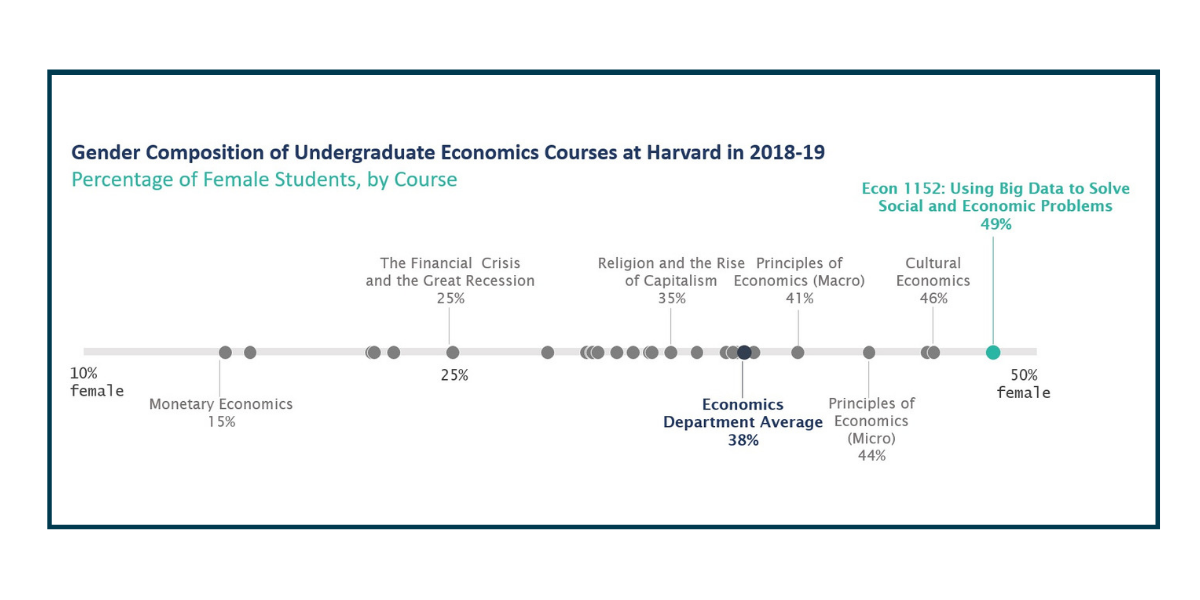Training the Next Generation
Using Big Data to Solve Economic and Social Problems
A central part of Opportunity Insights’ mission is to train the next generation of researchers and policy leaders on methods to study and improve economic opportunity and related social problems. This page provides lecture materials and videos for a course entitled “Using Big Data Solve Economic and Social Problems,” taught by Raj Chetty and Greg Bruich at Harvard University.
This course provides an introduction to modern applied economics in a manner that does not require any prior background in economics or statistics. It is intended to complement traditional Principles of Economics (Econ 101) courses. Topics include equality of opportunity, education, health, the environment, and criminal justice. In the context of these topics, the course provides an introduction to basic statistical methods and data analysis techniques, including regression analysis, causal inference, quasi-experimental methods, and machine learning.
The course was most recently taught at Harvard in Spring 2019, and, with an enrollment of 375 students, was one of the largest classes in the university. The course also increased gender diversity in Economics: 49% of the students who took the course were women, higher than in any other undergraduate Economics course taught at Harvard in the past academic year (among classes with at least 20 students). To learn more about the motivation for this class and its impact, see this article. We Want to Hear from You!
We Want to Hear from You!
Have you used these materials in your own classes? Your feedback is very valuable as we work to improve and expand the course materials we offer. Please fill out this form, and, in addition to tracking your responses we will record your email and send you updates as new materials become available.
Lecture Materials
| Materials | |
|---|---|
|
Course Syllabus |
PDFDocX |
|
Complete Set of 18 Lectures |
PDFPPTVideo |
|
Lecture 1 |
PDFPPTLecture NotesVideo |
|
Lecture 2 |
PDFPPTLecture NotesVideo |
|
Lecture 3 |
PDFPPTLecture NotesVideo |
|
Lecture 4 |
PDFPPTLecture NotesVideo |
|
Lecture 5 |
PDFPPTLecture NotesVideo |
|
Lecture 6 |
PDFPPTLecture NotesVideo |
|
Lecture 7 |
PDFPPTLecture NotesVideo |
|
Lecture 8 |
PDFPPTLecture NotesVideo |
|
Lecture 9 |
PDFPPTLecture NotesVideo |
|
Lecture 10 |
PDFPPTLecture NotesVideo |
|
Lecture 11 |
PDFPPTLecture NotesVideo |
|
Lecture 12 |
PDFPPTLecture NotesVideo |
|
Lecture 13 |
PDFPPTLecture NotesVideo |
|
Lecture 14 |
PDFPPTLecture NotesVideo |
|
Lecture 15 |
PDFPPTLecture NotesVideo |
|
Lecture 16 |
PDFPPTLecture NotesVideo |
|
Lecture 17 |
PDFPPTLecture NotesVideo |
|
Lecture 18 |
PDFPPTLecture NotesVideo |
|
Empirical Project 1 |
PDFDocxZip |
|
Empirical Project 2 |
PDFDocXZip |
|
Empirical Project 3 |
PDFDOCXZip |
|
Empirical Project 4 |
PDFDOCXZip |
|
To see the previous version of this class, taught at Stanford in 2017 |
Click Here |